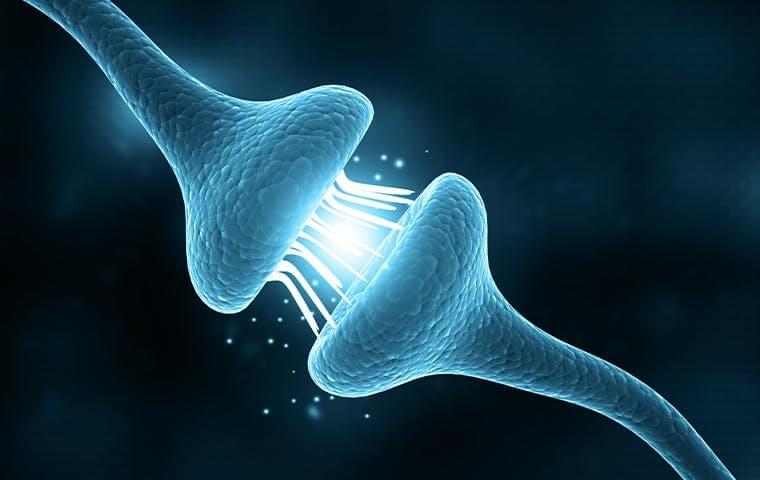Foundations of neurotechnologies BCIs.
Share your videos with friends, family, and the world.
Foundations of neurotechnologies BCIs.
Share your videos with friends, family, and the world.
Will there ever be a time when the human brain and its cognitive abilities will be replaced by a computer.
Can the forms of calculations that are found in a computer be able to go beyond the capacity of the neurons that are found in our own brains.
The age of singularity is where the human brain will be replaced by computers people like elon musk & Ray Kurzweil believe because of technology the future will be a heaven like civilization.
#singularity #technology #science #sciencefacts
Imagine brain implants that let you control devices by thought alone—or let computers read your mind. It’s early days, but research into this technology is well under way.
Film supported by @mishcondereya.
00:00 — Are brain implants the future of computing?
00:58 — Headsets are changing how brains interact with the virtual world.
02:24 — What is a brain computer interface?
03:24 — What’s holding this technology back?
04:00 — How wearable BCIs can read your mind.
06:27 — How BCIs physically alter the brain.
07:17 — Invasive brain implants.
09:14 — The first human cyborg.
09:51 — What’s next?
Sign up to our science newsletter to keep up to date: https://econ.st/3Mn3IR3
Read our Technology Quarterly on fixing the brain: https://econ.st/3rTay7o.
What does a brain-computer interface feel like? https://econ.st/3z07haD

Seizures come suddenly, triggered by stress, fever, flashing lights, or even just feeling tired. Some cause the body to jerk and shake while others can produce strange sensations, make one lose a sense of awareness, or faint. They can happen when the person is awake or asleep. When they pass, after a few seconds or minutes, they leave people tired, confused, and disoriented.
The brain usually maintains a certain level of inhibition that keeps neurons from firing uncontrollably. But during a seizure, one part of the brain starts firing too frantically and can’t stop, resulting in a spike of electrical activity and a seizure.
Synchron, a neurovascular bioelectronics medicine company, today announced publication of a first-in-human study demonstrating successful use of the Stentrode™ brain-computer interface (BCI), or neuroprosthesis. Specifically, the study shows the Stentrode’s ability to enable patients with severe paralysis to resume daily tasks, including texting, emailing, shopping and banking online, through direct thought, and without the need for open brain surgery. The study is the first to demonstrate that a BCI implanted via the patient’s blood vessels is able to restore the transmission of brain impulses out of the body, and did so wirelessly. The patients were able to use their impulses to control digital devices without the need for a touchscreen, mouse, keyboard or voice activation technology. This feasibility study was published in the Journal of NeuroInterventional Surgery (JNIS), the leading international peer-review journal for the clinical field of neurointerventional surgery, and official journal of the Society of NeuroInterventional Surgery (SNIS).

Fortunately, neuroscience can help — both to reassure you that you’re normal, and to provide support for the idea that there are specific habits and practices people can learn in order to improve memory when they need it most. Here are 8 of the most interesting I’ve found over the last couple of years:
Let’s start with this one, because it’s oh-so-easy. Michigan State University researchers studied whether Nile grass rats exhibited better memory when they were kept in an environment where the lighting resembled a corporate office (think dim fluorescent lighting), or where the lighting resembled a sunny day outside.
Sure enough, the study found that rats in dim lighting “lost about 30 percent of capacity in the hippocampus, a critical brain region for learning and memory, and performed poorly on a spatial task they had trained on previously.”

In a new review article published in Frontiers in Cell and Developmental Biology, researchers have suggested adding cellular enlargement to the hallmarks of aging [1].
Different cell types are known to have different shapes and sizes, which are dictated by their functions. In humans, sperm cells (male gametes) and ova (female gametes) have the smallest and largest diameters, respectively. On the other hand, some neurons are the longest cells: their axons can be over a meter long.
Nevertheless, within a specific cell type, the size variation is negligible. It has been long observed that healthy cells tend to maintain their size and that size changes are characteristic of pathological conditions. Cancer cells are often smaller than normal cells, while senescence leads to cellular enlargement [2].

Summary: Researchers identified two FDA-approved drugs that can mitigate or even eliminate the brain fog associated with COVID-19 infection.
Source: Yale.
Individuals with long COVID, sometimes referred to as “long-haulers,” experience symptoms that may persist for weeks, months, or even years after their acute viral infection.

Many investors are jumping to inject money into the startup.
Bill Gates and Jeff Bezos-backed foundations (Gates Frontier and Bezos Expeditions) have joined other companies in investing $75 million in Synchron, the endovascular brain-computer interface (BCI) company, according to a press release by the organization published on Thursday. This is a Series C financing round led by ARCH Venture Partners that brings the total amount raised since inception to $145 million.
Many investors on board.
Additional companies investing are Reliance Digital Health Limited, Greenoaks, Alumni Ventures, Moore Strategic Ventures, and Project X join ARCH as new additional investors.
Synchron through Business Wire.
The funding will serve to support and promote the development of Synchron’s first platform product (Synchron Switch BCI), as well as the beginning of a pivotal clinical trial.

Vitamin D plays an important role in the regulation of calcium and phosphorus absorption by the organism. It also helps keep the brain and immune system working. Researchers at the Federal University of São Carlos (UFSCar) in Brazil and University College London (UCL) in the United Kingdom have now shown that vitamin D supplementation reduces the risk of dynapenia in older people by 78%.
Dynapenia is an age-associated loss of muscle strength. It can be partially explained by muscle atrophy and is a major risk factor for physical incapacity later in life. People with dynapenia are more likely to fall, need to go to hospital, be prematurely institutionalized, and die.
An article on the study is published in the journal Calcified Tissue International and Musculoskeletal Research. The study was supported by FAPESP.